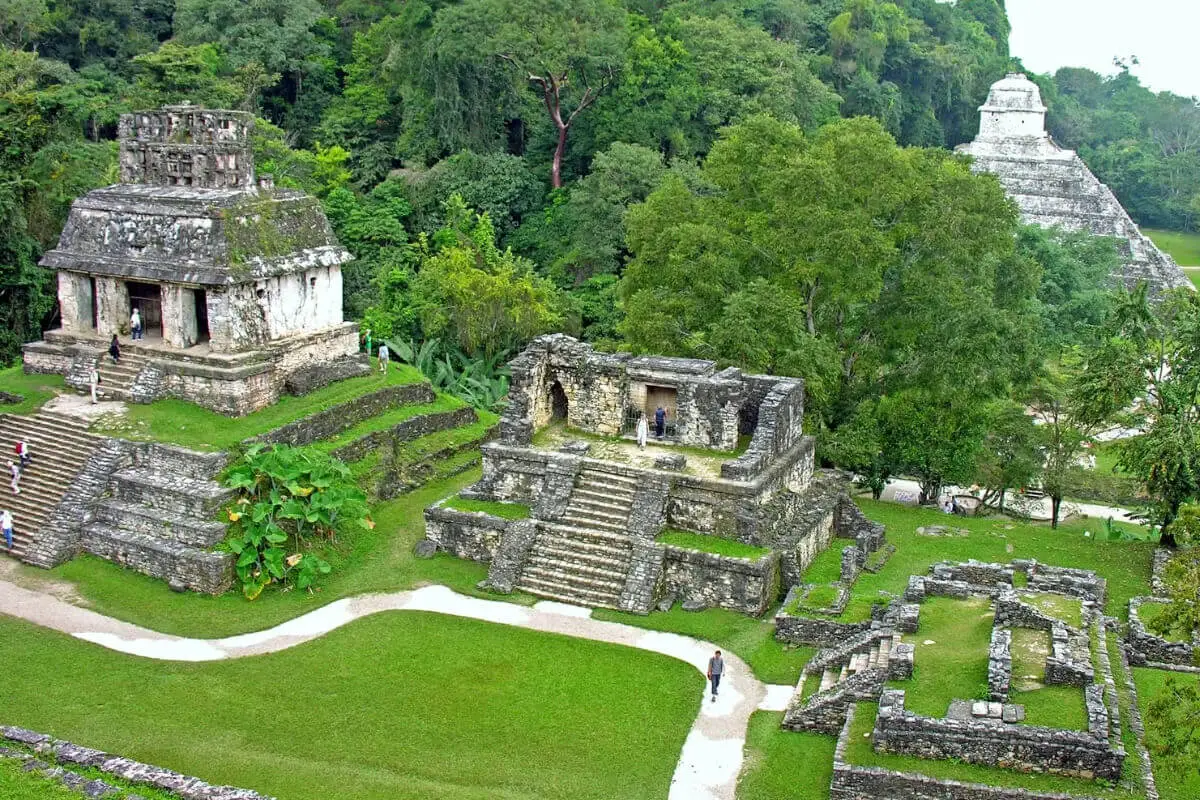Immersing oneself in exploring Aztec and Mayan civilizations is a journey through time, showcasing roller-coaster rides of creativity birthed from historical events, integrally intertwined with their belief systems. Significant artistic revolutions occurred in parallel with these cultural transformations, their art illustrating stories from the everyday life and cosmological views of these ancient civilizations.
From their unique styles, owing to various anthropological and sociopolitical events, to the profound impact of their religious rituals and gods, the artistic output of the Aztec and Mayan kingdoms offer patterns of a unique tapestry that tell stories of their traditions, customs, and ideologies. As we traverse through this exploration, we will delve deeper into different facets of their art, from the materials and techniques used to the architectural marvels they erected.
Table of Contents
- Historical Overview of the Aztec and Mayan Civilizations
- Religious Influence on Aztec and Mayan Art
- Aztec and Mayan Art Techniques and Materials
- Architectural Art: Aztecs versus Mayas
- Related Questions
Historical Overview of the Aztec and Mayan Civilizations
Understanding the Underpinnings of Aztec and Mayan Arts: A Confluence of History and Creativity
The grandeur of civilization’s past echoes infinitely through the ages in one language that remains invariably potent and universally comprehensible— Art. The narratives of Aztec and Mayan civilizations, two prominent indigenous tribes of Mesoamerica, are woven deeply into the rich tapestry of their respective arts, enabling us to delve further into their fascinating histories and unique cultural narratives.
Visualizing the Aztec Art
The Aztec civilization arose from a synthesis of cultures in Central Mexico around the 13th century. Aztec art, derived from the multiple foundations of this synthesis, is a poignant reflection of the tribe’s history—most notably, their invincible faith in religion and warfare fused with the daily color of life.
Known for their architectural prowess, images of gods and narratives depicting myths were ingeniously integrated into their stone carvings and architecture, the remnants of which can be seen in the capital city— Tenochtitlan. Moreover, the Aztecs’ artistic oeuvre drew heavily on their economic revolution. Goldsmithing, for instance, became highly refined, symbolizing societal affluence. Here, historical progression towards economic buoyancy found an artistic portrayal— an infallible reflection of history on art.
Deciphering the Mayan Art
The Mayan culture flourished in Mesoamerica long before the emergence of the Aztecs. Their art, developed over several centuries, reveals an incredible evolutionary journey. Here, the cloak of rigidity often associated with indigenous art is gently lifted to reveal a dynamic art form that shifted and evolved in sync with the changing times of civilization.
The early Mayan art, fraught with simplicity, gradually encompassed elaborate narratives and sophisticated artistic techniques as the civilization matured. This incremental sophistication mirrors the civilization’s growth, where developments in science, script, and religious ideologies found their manifestation in art. The complex Mayan calendars, astronomical advancements, and the evolution of hieroglyphs—all played their part in shaping Mayan art.
Intertwined with an intricate web of rituals and beliefs, the Mayan artists embraced a magically real world. Consequently, their sculptures, murals, ceramics, and hieroglyph inscriptions are flushed with a tantalizingly transmundane aura. The Postclassic period saw a surge in naturalistic renditions of daily life scenes, royal portraits, and mythical narratives, underscoring the genre-blurring blend of the mortal and divine.
Final Strokes
Just as the modern artist dips his brush into the palette of his life’s experiences, so did the ancients, adding colors of their historical progression onto the canvas of their creations.
History, thus, is more than a neutral backdrop; it is. Indeed, the invisible hand guiding the brush—a silent partner in the creative process. This exceptional intertwining renders Aztec and Mayan arts intriguing and invaluable, opening our eyes to their aesthetic grandeur and the vibrant tapestries of their pasts.
Religious Influence on Aztec and Mayan Art
Continuing from this robust introduction, we delve deeper into the captivating world of Aztec and Mayan arts, specifically focusing on how their religious beliefs pervade their esteemed creations.
They both possessed a religion saturated with a pantheon of gods and goddesses, elaborate rituals, and intricate cosmological theories, most of which were reflected intensely in their art forms.
The Aztecs held a revered devotion to Huitzilopochtli – the god of sun and war. It is manifested in stunning sculptural reliefs and mural frescoes. The Templo Mayor, a significant architectural masterpiece in the Aztec capital of Tenochtitlan, was considered sacred for religious and highly spiritual acts.

Atop this tower were twin temples devoted to Huitzilopochtli and the rain god, Tlaloc. These effigies assert the Aztecs’ deep adoration towards their gods, demonstrating how their art became a device for deifying their convictions.
Gold and precious stones, tools of their sophisticated goldsmithing techniques, often decorated statues of deities. These materials elevated the gods’ divine status, signifying the celestial wealth and power associated with them. With religious enthusiast fervor, they invested substantial resources into these depictions.
Transitioning to the Mayan civilization, their religious beliefs and art forms hold the power of entrancing any observer due to their dramatic narratives and intricate details. Ifluctuateses between the secular and the divine, proving that their religion was not just a fraction of their lives but the fabric of their culture.
Take, for instance, the revered Mayan god, Kukulkan, the feathered serpent deity. Noteworthy sculptures erected in his honor are impressive, exuding a surreal and exquisite ambiance.
The Temple of Kukulkan in Chichén Itzá is a testament to this deity’s significance within their beliefs, proving that religious ideals swelled beyond personal faith, ultimately influencing the architectural language of structures designed for worship.
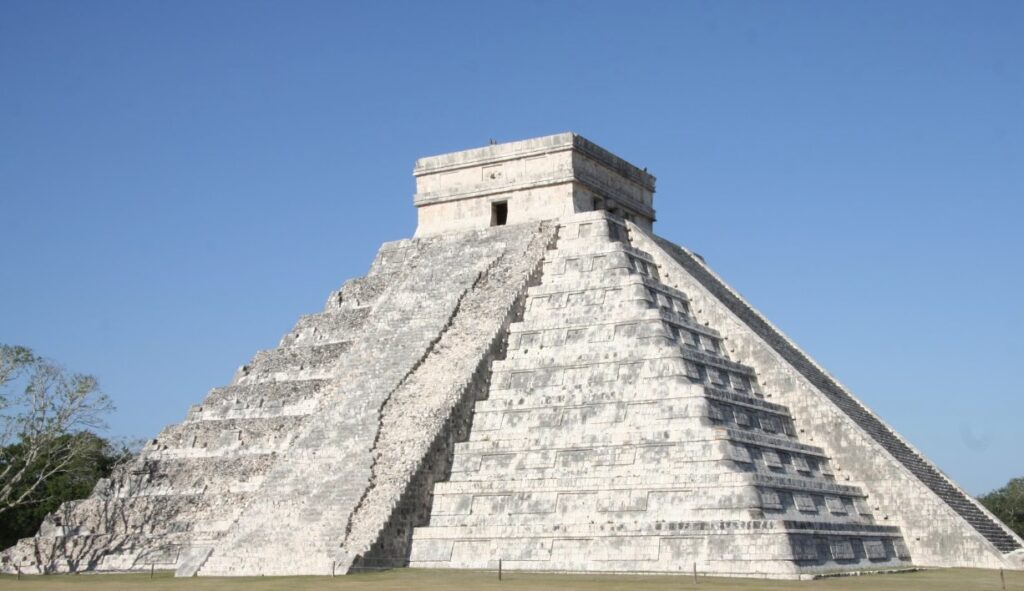
Ritualistic elements played an intrinsic role in their artistic creations. The Mayan ceramics, with complex scenes of mythological tales and divine entities, portray material evidence of their ceremonial performances and religious rituals.
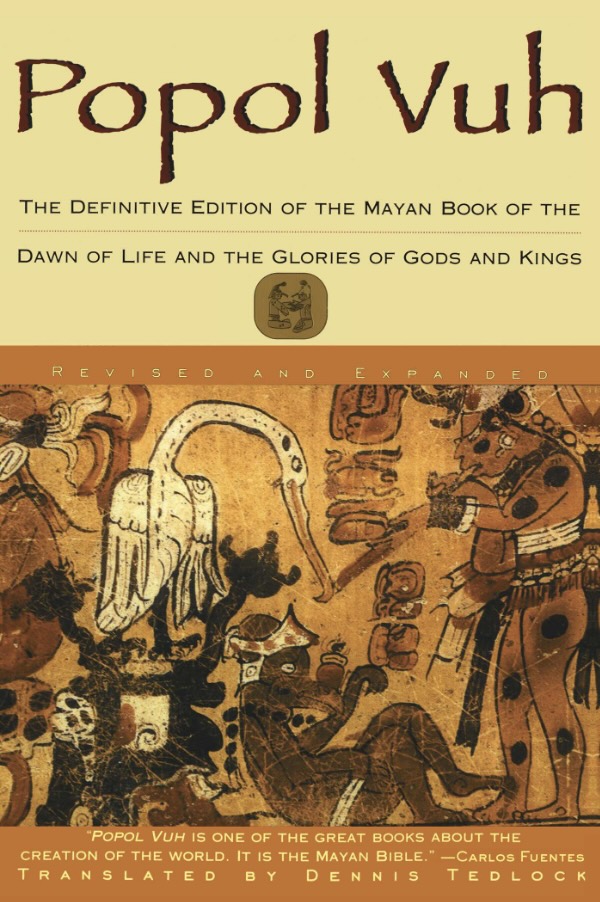
The ‘Popol Vuh,’ or the Mayan book of creation, breathed life into their pottery, replicating sagas of their gods, particularly the Hero Twins’ epic saga. The art reflects the astronomical knowledge, religious doctrines, and ceremonial rites of the Mayans, telling a story beyond the scope of the ordinary eye.
Mayan hieroglyphs occupy a unique space in the overlapping realms of art and script. Emerging from cosmetic purposes, these evolved into more complex forms to give visual form to their religious beliefs. The glyphs’ complexities showcase the myriad tales spun by their spiritual ideologies, scripting the divine eloquently into their art.
Therefore, the art of the Aztecs and the Mayas is more than just visual pleasure. It is a sacred resonance of their religious beliefs – an eternal conversation between humans and the divine.
From architecture to goldsmithing, or ceramics to hieroglyphs, they stand as elaborate vessels carrying cultural codes, spiritual concepts, and immortal stories of civilizations as they navigated their journey through the cosmos, glory, and tribulation.
Aztec and Mayan Art Techniques and Materials
Moving on from the mesmerizing structural intricacies and rich symbolism embedded in Aztec and Mayan architecture, we delve deeper into the vibrant tapestry of their uniquely potent artistic expression.
The beauty of the ancients lies not merely in the visible surface of their artifacts but more profoundly in the embedded stories of the people and places, their palpable interaction with eternal cosmic energies, and their embodiment of timeless myths and collective memories.
Looking into Aztec artistry, besides the splendid architectural productions, their talent also manifested conspicuously in works of smaller scale but of potent significance – decorative masks.
Used predominantly for ritualistic and ceremonial purposes, these masks were fabricated from wood, stone, and even obsidian materials, often wonderfully embellished with exquisite mosaic designs that utilized turquoise, malachite, and shell. These intricate embellishments and the raw materials represented the Aztec’s elevated appreciation for duality – the blend of aesthetics and spiritual significance.
Renowned for their stone carving skills, the Aztecs also crafted extraordinarily detailed relief sculptures on monolithic stones, encapsulating scenes from their intricate mythologies, pantheon of capricious gods, and celebratory, victory-laden war narratives.
They amplified the dimensionality of their sculptures by judicious application of pigments, helping to bring the stone narratives to dramatic life. Furthermore, the Aztecs creatively exploited the natural vibrancy of feathers, incorporating them artistically into shields, headdresses, and costumes — an embodiment of the harmonious interplay between avid craftsmanship and deep-rooted spiritual symbolism.
Mayan artistic expression, meanwhile, is observed as equally multifaceted, bearing distinct imprints of their advanced knowledge of cosmology, mathematics, and linguistics. Ceramics played an instrumental role in the artistic narrative of the Mayas.
Made using local clays and dyes, Mayan ceramics are renowned for their detailed painted decorations, which faithfully mirror their daily life, distinctive rituals, and mythology. The themes encapsulated in these beautiful ceramic works ranged from mundane everyday scenes to sacred spiritual ceremonies, offering an exceptionally detailed window into their ancient civilization.
Textiles also significantly impacted Mayan art, highlighting their knowledge of plant and animal fibers. The fabrics, often with intricate geometric and imaginative figurative designs, acted as vestments of identity, denoting social, political, and marital status within the civilization.
Mayans’ exploratory venture into painting encompassed their life, legends, and cosmological insights, often on plastered walls of temples, palaces, and pottery. These polychrome frescoes echo the voices of the past, reverberating through time with their subdued yet insightful aesthetic eloquence.
In retrospect, the artistic legacy of these ingenious civilizations – the Aztecs and Mayas, while bearing similarities in an underlying essence, stands apart in their unique artistic sensibilities and cultural storytelling.
Through their remarkable artistic endeavors, these ancient societies translated their beliefs, rituals, mythologies, and societal dynamics into a veritable spectrum of forms and materials – their legacy continuing to inspire and enlighten, delivering invaluable insights into their once vibrant cultures.
As we further explore and celebrate these ancient artistic practices, we can perceive and connect with the indelible human spirit that thrived in their artistry – pulsating to the universal rhythm of creativity and expression.
Architectural Art: Aztecs versus Mayas
Moving forward in this exploration, we’ll delve into distinctive architectural styles that saw emergence from these lands steeped in history and mystical tradition. Despite being born from distinct cultures and vast geographical separation, Aztec and Mayan architecture demonstrates an unquestionable mastery of design and construction, tinged with complexity and profound symbolism.
Aztec architecture stands as a pure embodiment of their complex cosmography. Carved out from the ruggedness of their environment, their buildings were centered around functionality and grandeur.
The city of Tenochtitlan stands as its crowning achievement, stretching its grandeur over a series of artificial islands. Within this city, the Templo Mayor, a colossal dual-staircase pyramid dedicated to the rain god Tlaloc and war god Huitzilopochtli, marked the heart of the city, its geometrical precision speaking of the Aztecs’ advanced understanding of spatial design.
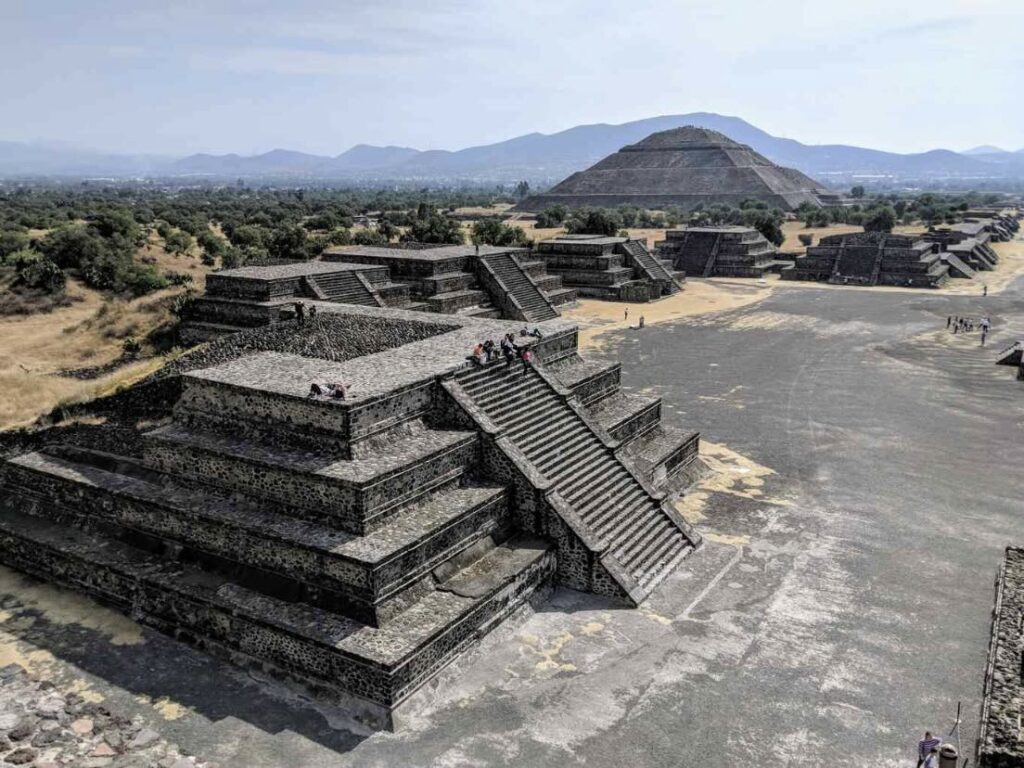
Aztec buildings devoted to worship often incorporated Tzompantli, skull racks, and intricate carvings, a poignant symbol of the Aztec religious tenet of human sacrifice.
Similarly, their Palaces, like the Palace of Nezahualcoyotl, were not just administrative centers but also embodied creativity and eloquence of Aztec aesthetics.
On the other hand, Mayan architecture epitomizes an intricate blend of mathematics, astronomy, and mythology. The natural environments where Mayans resided – rain forests, mountains, and coastal regions – shaped their architectural style, balancing functionality and aesthetics. The Mayan arch, or corbeled vault, was a hallmark of their architectural prowess, offering a captivating combination of strength and elegance.
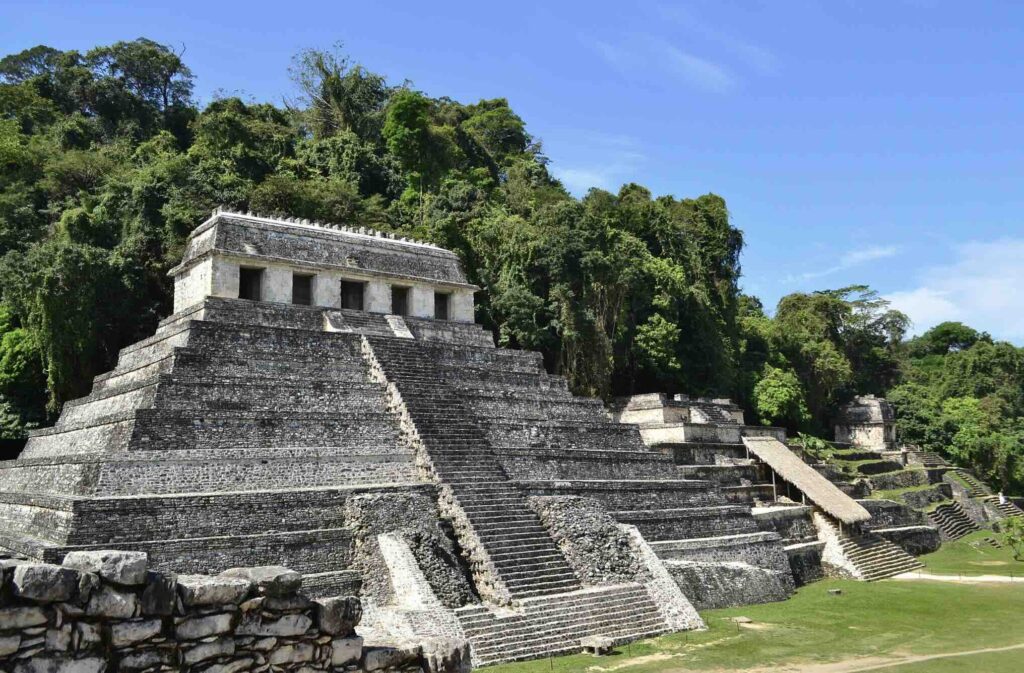
A perfect example of this is the Temple of the Inscriptions in Palenque, a grand pyramid housing wonderfully preserved hieroglyphic inscriptions. Similarly, their stepped pyramid structures, like El Castillo in Chichen Itza, stand as timeless testaments to their advanced construction techniques, with alignments traceable to celestial bodies and events.
Both Aztec and Mayan architectural styles portray an intense intermingling of religion with artistic expression, of stone carvings and reliefs with the unwavering physicality of architecture, transforming these buildings into silent storytellers of each civilization’s unique historical and spiritual journey.
Plunging into various facets of each civilization’s artistry, decorative masks were a significant part of Aztec artwork, handcrafted from various materials, including turquoise, wood, gold, and obsidian. These sculptural masterpieces played crucial roles in rituals and ceremonies, reflected social hierarchy, and were even used as funerary offerings.
On the other hand, Mayan ceramics showcase incredible craftsmanship. They are useful vessels and canvases adorned with painted tales of mythology, history, and daily life. Tri-dimensional effigy vessels, cylinder vases, and bowls reverberate the echo of vanished celebrations, rituals, and personal stories.
In conclusion, the legacy of Aztec and Mayan art and architecture is not confined within the boundaries of beauty, form, or creativity. It represents an indelible cultural imprint, an echo of societies that viewed art not as a distinct entity but as a reflection of life itself.
It pleads for understanding the pulse of the societies whence it originated and the tales of life, death, and everything in between. The enduring legacy of Aztec and Mayan art and rich heritages continue to inspire and leave humankind in awe of their indisputable genius even today.
Anita Louise Art is dedicated to art education, great artists, and inspiring others to find and create their art. We love art that uplifts and inspires. #ArtToMakeYouSmile! #ArtToMakeYouHappy!
If you are interested to see any of my art, you can find out more by clicking here. If you are interested in what inspires me and my paintings, you can discover more by clicking here.
We have a free newsletter and would love you to be part of our community; you can subscribe to the newsletter by clicking here. If you have any questions, I would be happy to talk to you anytime. You can reach me, Anita, by clicking here.
Subscribe to our Anita Louise Art YouTube Channel with great videos and information by clicking here.
Join us for our podcast “5 Minutes With Art.” Spend just 5 minutes a week with us to discover and learn about great art and artists. You can find out more about our podcast by clicking here.
Related Questions
What Is The Importance Of Art From The Renaissance Period?
Renaissance art is essential as it was a time of rebirth and discovery. Artists like Leonardo da Vinci, Michelangelo, and Raphael were at the forefront of that change, creation, and discovery. Renaissance art has influenced art and artists for many centuries and continues to influence artists today.
By clicking here, you can learn more by reading What Is The Importance Of Art From The Renaissance Period?.
21 Top Renaissance Artists And Their Works Of Art
When we speak of top Renaissance artists, we think of the trinity of artists like Leonardo da Vinci, Michelangelo, and Raphael. But besides these three artists, many other influential Renaissance artists remain essential.
By clicking here, you can learn more by reading 21 Top Renaissance Artists And Their Works of Art.
Greek And Rome’s Influence On Renaissance Art
The Renaissance, as a period of rebirth, was greatly influenced by the classical ancient art of Greek and Rome. During this period, many of these works of art were also rediscovered, which led to the discovery of realism, symmetry, and harmony in the arts. Greek and Roman art also influenced the subject matter of many of Renaissance artists.
By clicking here, you can learn more by reading Greek And Rome’s Influence On Renaissance Art.

